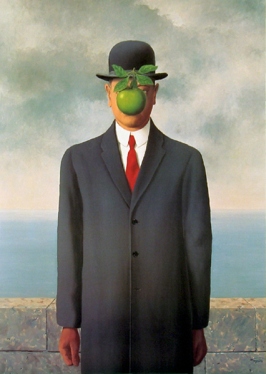Out of dadaism came another movement based on the automatism of the mind - where the uncensored thoughts of the mind provided the inspiration for writings and art. It came to be known as Surrealism. One of the great masters to join this movement was the Belgian artist Rene Magritte.
Magritte began his career as a teenager doing impressionistic paintings, and he was also inspired by the cubist and futurist movements in the early 1920s. In 1926, Magritte created his first surrealist work, but the critics were underwhelmed by it and by the exhibition in which it was featured. He moved to Paris after the failed exhibition and met Andre Breton, the initial founder of the surrealist movement. Though he never had much more success in Paris, Magritte's friendship with Breton helped to establish himself in the surrealist movement.
Magritte's work was more symbolic and representational than dreamlike and automatic. He is known for juxtaposing objects and creating paradoxical settings and compositions. For instance, Magritte's Empire of Lights shows a view of a home at night with an outdoor light illuminated, but with a daytime sky above the dark silhouette of the trees.
Magritte died in 1967 from pancreatic cancer. His use of everyday objects in juxtaposed situations had a great influence in later pop artists, though Magritte never acknowledged having a connection to pop art himself. Still many scholars, critics, and artists today frequently examine Magritte's influence and connection to contemporary art. Though I am of the attitude that contemporary and pop art is far too straight-forward to have much connection with the deeper and often inexplicable representations seen in the work of Magritte.
 |
Rene Magritte The Son of Man oil on canvas 116 x 89 cm. 1964 |

No comments:
Post a Comment